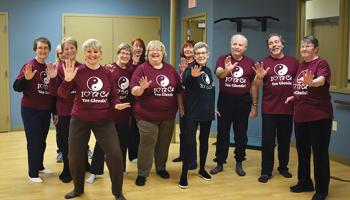
It is estimated that one in four Americans aged 65+ takes a fall every year in the United States. This statistic is significant because a fall can potentially have a detrimental effect on an individual’s health, safety, and financial independence. Here’s the good news: falls are avoidable. They’re not an inevitable reality of the aging process, but age does increase the risk associated with a fall.
Understanding risk factors and implementing fall prevention strategies into a daily routine can be extremely beneficial. Risk factors are defined as something that increases a person’s chance of falling. Below is a short list compiled by the Centers for Disease Control of common types of risk factors.
Biological
- Muscle Weakness
- Balance Problems
- Chronic Conditions
- Vision Loss or Changes
- Problems with Feet
Behavioral
- Substance Abuse
- Inactivity
- Engaging in Risky or Unsafe Behavior
Environmental
- Poor Lighting
- Tripping Hazards
- Unsafe Public Areas
- Lack of Railings or Grab Bars
There are simple and inexpensive ways to decrease the risk of a falls in the home. Make sure to clear any clutter from walkways and eliminate any potential tripping hazards such as small rugs. Increasing the lighting throughout the house will be beneficial, especially at the top and bottom of stairs. All stair cases should have two secure rails, and grab bars can be useful in the bathroom near the toilet and in the shower.
Working on improving balance and building strength are also crucial to preventing falls. Here at the Cass County COA we have a variety of programs focused on building strength and balance, as well as a fitness center specially equipped to meet the needs of seniors. If you’re looking for a more personalized approach, stop by one of the fitness centers at either location to speak with one of our fitness instructors.
Whether we are concerned about our own fall risk or that of someone we are caring for, it’s important to know the risk factors and how to prevent a fall. It is never too late to make steps towards improving balance.
Check Your Risk for a Fall
- Have you fallen in the last 6 months?
- Do you use, or have you been advised to use, a cane or walker to get around safely?
- Do you sometimes feel unsteady when you are walking?
- Do you have to steady yourself by holding onto furniture when walking at home?
- Do you worry about falling?
- Do you need to push yourself up with your hands to stand up from a chair?
- Do you have trouble stepping up onto a curb?
- Do you often have to rush to the toilet?
- Have you lost any feeling in your feet?
- Do you take medication to help you sleep or improve your mood?
- Do you take medication that sometimes makes you feel lightheaded or more tired than usual?
- Do you often feel sad or depressed?
- Do you have difficulty avoiding hazards in your path because you don’t see well?
Add up the number of YES answers (Questions 1 & 2 are worth double). If the total is 4 or more, you may be at risk of falling
List developed by the Greater Los Angeles VA Geriatric Research Education Clinical Center and adapted by the Centers for Disease Control & Prevention




